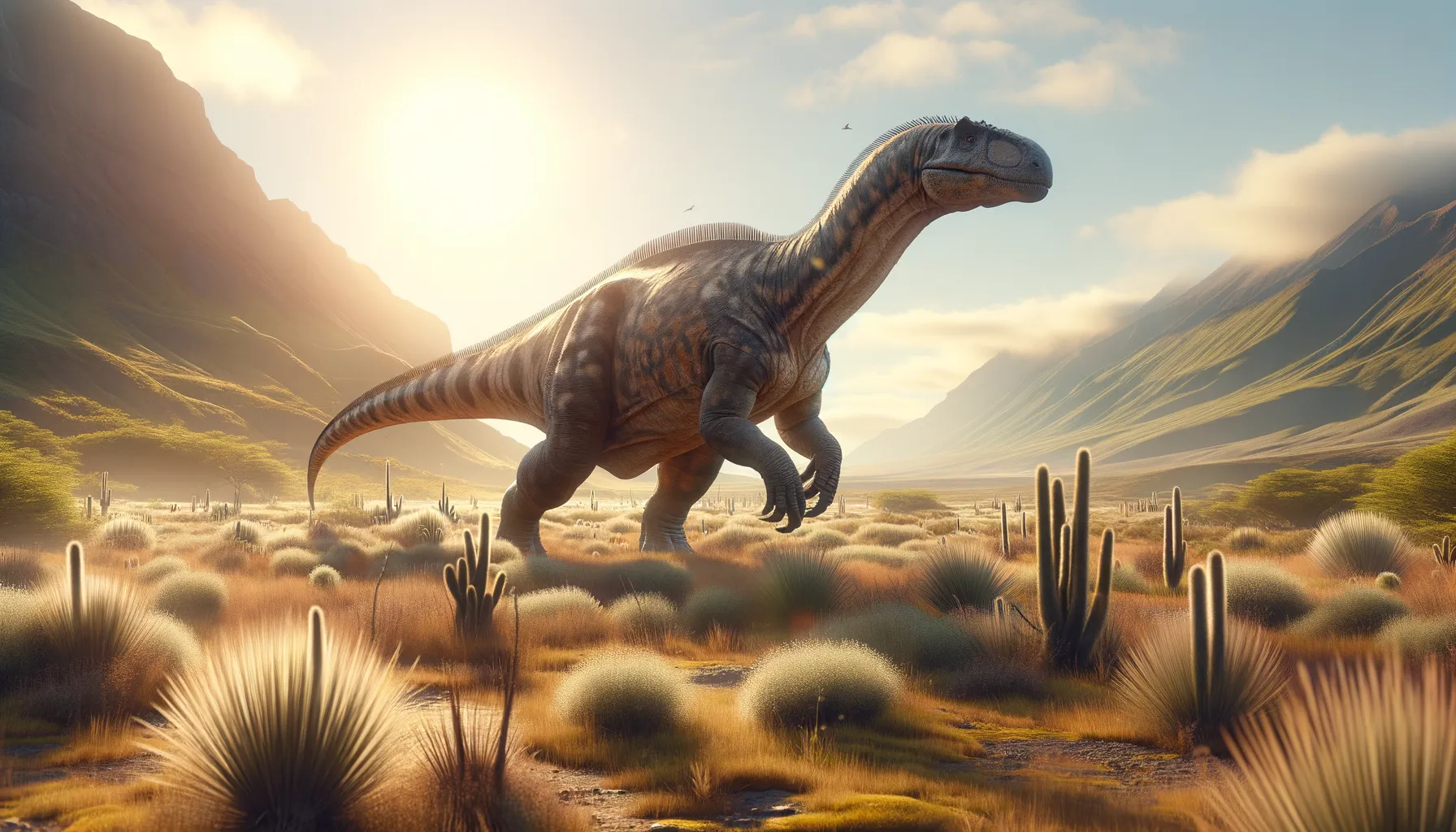
Neuquensaurus
The mighty titan of ancient Argentina.
Period
Cretaceous
Length
Measured around 15 meters in length.
Height
Stood approximately 2.5 meters tall at the hips.
Weight
Weighed about 10 to 14 tonnes.
Neuquensaurus was a massive herbivorous dinosaur that roamed what is now South America during the Late Cretaceous period. It was part of the titanosaur group, characterized by its large size, long neck, and whip-like tail. Despite its enormous mass, it moved slowly across ancient landscapes, grazing on vegetation. Its fossils give us insight into the diverse ecosystems of South America millions of years ago.
Diet
Neuquensaurus was a herbivore, feeding on the abundant plant life of its time. It likely consumed a variety of vegetation, including leaves from tall trees, which it accessed using its long neck.
Hunting
As a herbivore, Neuquensaurus did not hunt but instead focused on gathering food from surrounding plant life. Its size provided protection from predators, giving it the freedom to graze in relative safety.
Environmental challenges
Neuquensaurus faced environmental challenges such as changing climates and shifts in vegetation, requiring adaptations in its feeding strategies. Its large size helped it overcome some predators, though it needed vast amounts of food to sustain itself. Droughts and shifts in plant species may have occasionally limited its food sources.
Speed
Slow-moving due to its large size.
Lifespan
Estimated to be several decades, like most sauropods.
First discovery
Discovered in Argentina in the early 20th century.
Fun Facts
- Neuquensaurus is a dinosaur that lived about 70 million years ago during the Late Cretaceous period.
- It was named after the Neuquén Province in Argentina, where the first fossils were discovered.
- Neuquensaurus was a part of the sauropod family, known for their long necks and tails, but it was relatively small for a sauropod, reaching about 10 meters in length.
- Despite its size, Neuquensaurus was likely a herbivore, feeding on plants and trees with its peg-like teeth.
- The dinosaur had a unique armor plating along its back, possibly for protection against predators.
- Neuquensaurus was a part of a group called Titanosaurs, which were some of the last surviving sauropods before the mass extinction.
- This dinosaur's fossils have helped scientists understand more about the diversity and evolution of sauropods in South America.
Growth and Development
Neuquensaurus experienced rapid growth in its early years to achieve its large size, a typical trait among sauropods. Its development involved growing long necks and tails, aiding in its feeding habits and overall balance. This growth allowed for survival advantages in reaching food resources.
Habitat
Neuquensaurus inhabited regions of what is now South America, particularly in areas that provided plentiful vegetation. The environment comprised semi-arid regions and open plains, where its large size was advantageous. These landscapes offered a range of plants to sustain its herbivorous diet.
Interaction with other species
Neuquensaurus likely interacted with a variety of other dinosaur species within its ecosystem. Its size served as a deterrent to many predators, though it might have shared its habitat with other herbivores. The presence of diverse lifeforms created complex ecological relationships in its environment.
Natural lifespan
It naturally lived for several decades, like most dinosaurs of its size.
Reproduction
Neuquensaurus, like other sauropods, likely laid eggs in nests. These nests would have been in safe, hidden areas to protect the eggs from predators. Once hatched, the young would grow rapidly to avoid threats from smaller carnivores.
Social behaviour
It is believed that Neuquensaurus may have had a social structure, possibly moving in herds for protection. Herding would allow for collective defense against predators and maximize feeding efficiency. Such behavior suggests a level of social interaction within groups.
Fossil locations
Fossils of Neuquensaurus have been primarily discovered in Argentina. These findings contribute significantly to our understanding of sauropod diversity in South America. Excavations in the Neuquén Province have revealed important specimens of this species.
